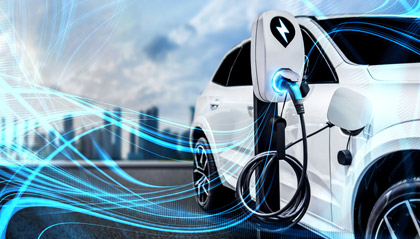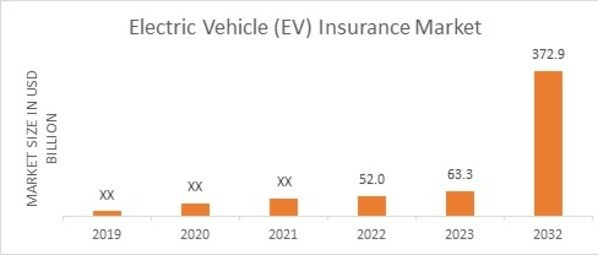Crackling with futuristic appeal, electric vehicles (EVs) are no longer a novelty but a burgeoning reality. Yet beneath their sleek lines and silent engines lie challenges that could rival any 0-60mph acceleration test – especially in the realm of insurance. From battery lifespan to charging station liability, insuring these green machines presents uncharted territory and fresh headaches for providers. Strap yourself in as we explore these electrifying complexities – and the innovative solutions forging a path towards a greener, insured automotive future.
Understanding Electric Vehicles

Electric vehicles are an integral part of the automotive landscape. Gone are the days when the word ‘electric’ conjured images of puny, low-powered golf carts. Today’s electric vehicles (EVs) are thrilling machines, offering instant torque, near-silent operation, and the promise of zero tailpipe emissions.
At their core, EVs are driven by an electric motor, which runs on electricity stored in batteries. The range of an EV – how far it can go on a single charge – depends on the capacity of these batteries. These can vary greatly from model to model, with luxury offerings from Tesla and Rivian offering ranges up to 400 miles, while more affordable options hover around 150-200 miles of range.
Then there’s the charging infrastructure, a critical component of the electric vehicle ecosystem. Charging stations, which convert electricity from the grid into a form that can charge an EV’s batteries, are becoming increasingly commonplace, with numerous public, residential, and workplace locations. Charging times can vary widely depending on the charger’s power output and the vehicle’s battery capacity. Although, in most cases, charging an EV overnight at home is sufficient for daily commuting.
But it’s not all smooth sailing with electric vehicles. Battery degradation is an issue. Over time, the capacity of an EV’s battery reduces, limiting the vehicle’s range. This is similar to how a smartphone battery holds less charge after a few years. The rate of degradation depends on many factors, and while battery technology has improved significantly, it remains a legitimate concern for potential EV owners.
Moreover, repairs and maintenance of EVs can present challenges. These cars feature complex electronics and battery systems that require specialist knowledge to service and repair. In some cases, the cost can be significantly higher than for gasoline or diesel cars, leading to higher insurance premiums.
However, the cost trends for EVs are moving in a favourable direction. Prices have been falling and are projected to reach parity with internal combustion engine vehicles in a few years. Battery technology is also improving, with durability and energy density on the upswing. Continued advancements in technology will likely bring more affordable and efficient EVs to the market in the upcoming years.
While insurers grapple with accurately pricing premiums for EVs, it’s clear that understanding the intricacies of these vehicles lays the foundation for effective insuring strategies. In the world of EV insurance, knowledge is indeed power – the power to understand risks, predict outcomes, and provide fair and effective insurance solutions. Let’s explore the challenges and potential solutions in insuring these four-wheeled lightning bolts.
Challenges in Insuring Electric Vehicles

Without a doubt, electric vehicles (EVs) have changed the course of the automotive industry, but in the world of insurance, they pose new and unique challenges. More complex than traditional cars, their unique design and parts are a concern for insurance companies.
The cost of repairs and replacements for electric vehicles can be significantly higher than for their petrol or diesel counterparts. Even minor damage can result in pricey procedures. This is mainly due to the expensive, complex, and, at times, rare components of an EV, such as the onboard computer systems and batteries. In the event of an accident, these parts are more prone to serious damage, causing repair costs to skyrocket.
Beyond repair costs, an electric vehicle’s battery pack poses a substantial challenge for insurers. These packs are an expensive component in an EV and their life expectancy varies, often decreasing as the vehicle ages. This leads to uncertainty, with insurers unsure whether aging batteries may require replacement after an accident or simply extensive repair work.
Moreover, the relative newness of electric vehicles in the mass market doesn’t provide a long history of data for insurance companies to risk assess and price the premiums accurately. Traditional underwriting models may not be applicable, which compels companies to rethink their strategies.
Lastly, there’s also the issue of perceived risk. EVs tend to have much faster acceleration than conventional cars, leading insurers to worry that their drivers might adopt a riskier driving style, which can indirectly increase the likelihood of an accident.
In summary, the high repair costs associated with EV components, the lack of historical risk data, the potential issues arising from battery life degradation, and the perceived risk of speed-focused driving styles all contribute to the complexity of insuring electric vehicles.
Innovative Solutions for Insuring Electric Vehicles

Let’s take a drive down the innovation lane of electric vehicle (EV) insurance. To begin with, insurance companies must pilot themselves through the field of battery risk assessment. Traditional combustion engines have been studied in depth over the past century. Their failure rates, repair costs, lifespan, all are well understood. For EVs, we are essentially starting over. So here’s a thought: what about a battery health analysis tool that allows for a more precise evaluation of an EV battery’s lifespan and risk of failure?
By teaming up with the smart minds in the tech industry, an elegant AI-powered tool that records and analyzes battery health data might just be the ticket. Updated in real-time, this system could predict potential issues before they become costly problems, allowing insurers to adjust their premiums accordingly.
Next point of convergence, telematics. This good-for-all solution lies in tracking real-time vehicle data to assess risk. Less about punishing reckless drivers with higher premiums, telematics can ensure safe, responsible EV owners are rewarded with lower rates. That eco-friendly Tesla owner who limits their driving to essential trips and always follows the speed limit? They get the benefit of lesser premiums, placing the power of cost control in the driver seat.
For this to be effective, insurers should think about merging telematic systems with a pay-per-mile model. It makes sense if you think about it. EV owners typically rely on their vehicles for local commuting and have lower annual mileage. Combine this with the lower risk of major powertrain repairs, and you’ve got a winning model for insuring EVs.
Lastly, consider peer-to-peer insurance networks. An innovative solution that’s based more on community than big corporations, connecting EV owners into a shared pool. As participants, EV owners can benefit from lower premiums, with lower risk spread across the community. Combined with data-driven tools and telematic devices, peer-to-peer networks could be the ticket of the future for insuring electric vehicles.
At the end of the day, it’s all about smart innovation. Experience-based pricing, battery health tracking, telematics, and peer-to-peer networks; these are just a few solutions that break away from the traditional insurance mold. They promise a revolution in EV insurance based on fairness, mutual trust, and technological advancement, for a landscape that is as future-ready as EVs themselves.
Case Study: Progressive Practices in EV Insurance

A close look at such pioneering practices essentially zeroes in on one of our key subjects on this point: Tesla, the EV giant and a fantastic example of addressing EV insurance hurdles headfirst with progressive and innovative solutions. Tesla’s novel approach can best be described as “in-house” insurance, a futuristic, risk-adjusted model filed under the umbrella of its brand.
Understanding that conventional insurance companies may not be fully equipped to offer an efficient insurance framework for EVs, Tesla’s insurance solution comes as a direct response to mitigate industry-wide challenges. It introduces a business model where the cost of insurance is calculated based on the precise vehicle data and driving behaviors. The vision is not just about coverage but about integrating the insurance cost into the overall total cost of ownership of an EV. It’s a leap towards creating a transparent, usage-based insurance model, tailored for EVs.
More recently, Tesla’s option to include the cost of insurance coverage into its vehicle purchase finance packages shows further ingenuity. This progressive step simplifies the process and provides an all-in-one solution for potential buyers.
To achieve this, Tesla leverages its grasp of vehicle tech data. By capitalizing on telematics and driving behavior data, it demands a more precise, risk-based pricing model that is attractive to EV owners. This practice could pave the way for a new normal in the insurance industry, where connected vehicles transmit key safety, performance, and driver habit data directly to insurers.
Tesla is not alone; Metromile, zuhnë, and others have also begun to offer pay-per-mile insurance — another progressive practice for insuring EVs rooted in the telematics-grounded approach. These companies use plug-in devices or built-in telematics systems to track mileage and driving behaviors, thus providing a personalized rate based on actual car use.
In the end, these progressive practices highlight the industry’s ability to adapt and innovate creatively. As the EV market expands, learning from these examples could spark the evolution of customizable, flexible, and cost-effective insurance solutions that match the dynamic nature of the electric vehicle industry.
FAQs
What are the main challenges in insuring electric vehicles?
How can these challenges be tackled?
What is the role of technology in overcoming these challenges?
Conclusion
Conclusively, while insuring electric vehicles presents unique challenges encompassing higher repair costs and potential battery liability, solutions are progressively emerging. Innovative practices such as EV-specific policies and proactive communication about fuel efficiency and maintenance savings are driving a critical shift. Insurers and policy makers must continue to adapt and spur on the broad adoption of electric vehicles, as they are an integral part of a sustainable, carbon-neutral future.
